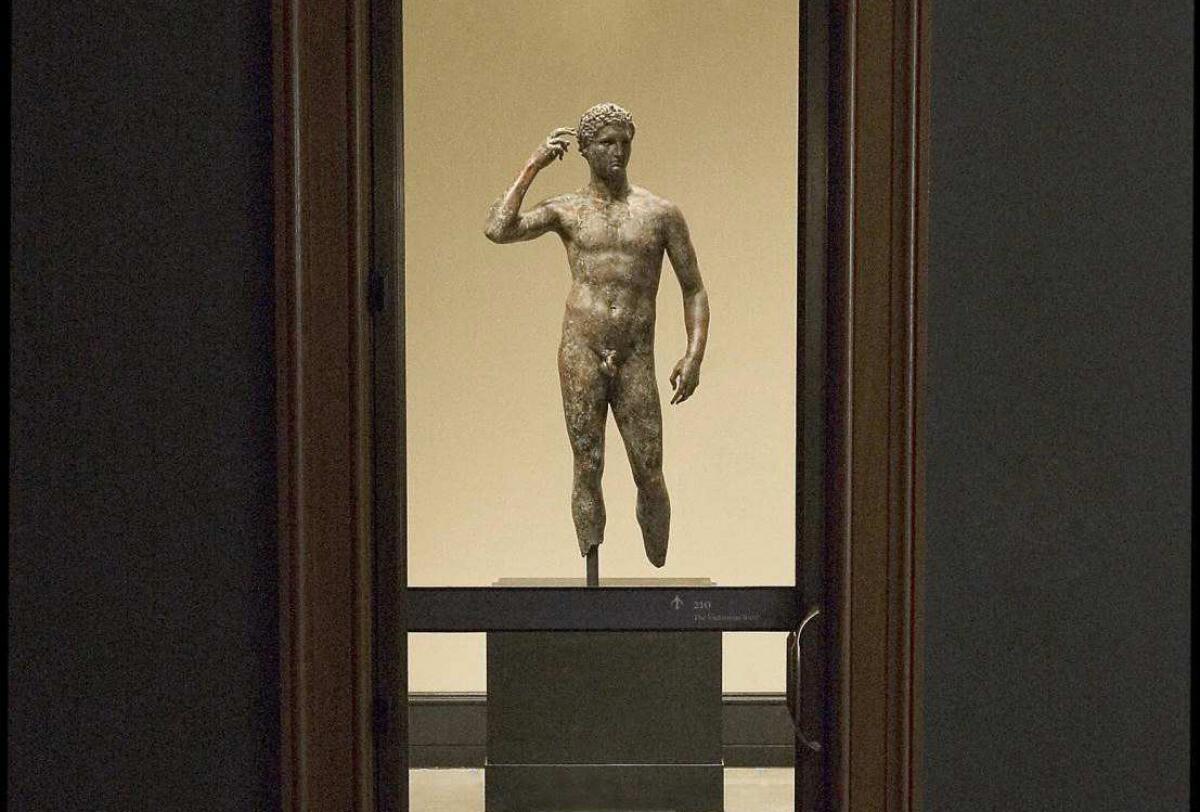2010 ruling in ‘Getty Bronze’ case under review by Italian court

- Share via
The next round in the J. Paul Getty Trust’s circuitous fight against an Italian court’s order to turn over one of its most prized ancient statues will revolve around whether the Getty was given a fair shake in the 2012 proceedings that put its ownership of the piece in jeopardy.
Stephen Clark, the Getty’s top attorney, had been puzzled earlier this month when Italy’s highest court, the Court of Cassation, froze the museum’s appeal of the order to turn over the 2,300-year-old Greek statue that’s known alternately as “Victorious Youth” and the “Getty Bronze.”
He said clarification has come from Rome that the issue is whether the lower court in Pesaro, Italy, which ordered the statue’s return in 2010 and affirmed it in 2012, erred by not letting the Getty have a public hearing and call witnesses before making a decision based only on legal briefs.
“The court made it lawyers and judges only, and we objected,” Clark said. If witnesses had been allowed, he said, “we would have been able to put on a full defense” that the museum’s 1977 purchase of the life-size but footless statue was made in good faith rather than having been made, as the judge who initially ordered the seizure in 2010 put it, “despite knowledge of the risks of an illegal acquisition.”
Another judge had ruled in 2007 that there were no grounds for forcing the Getty to turn the statue over, but prosecutors in the Marche reopened the case and got a different verdict.
The main issue is whether Italy can claim that a statue fished from international waters of the Adriatic Sea off its eastern coast is covered by a 1939 law that declared all cultural artifacts found in Italian territory to be government property.
Evidence suggested that the fishermen who pulled up the bronze in their nets in 1964 came ashore and hid it rather than alerting authorities and that it was sold to dealers who subsequently sent it abroad without a required export license. The Getty contends that while those may have been infractions of Italian law, they have no bearing on the fishermen’s right to keep the statue and sell it as they wished. In the museum’s view, the chain of possession that brought the statue to L.A. was legitimate.
“Victorious Youth” remains on display at the Getty Villa in Pacific Palisades, in a climate-controlled room of its own.
Clark said the case is now before Italy’s constitutional court, which will decide whether the ruling in Pesaro needs to be thrown out. If that happens, he said, “conceivably we would have to start all over again” with another trial in the lower court. If the constitutional court finds that the proceedings in Pesaro were proper, the case will return to the Court of Cassation to decide the appeal.
Follow @boehmm of the L.A. Times for arts news and features
More to Read
The biggest entertainment stories
Get our big stories about Hollywood, film, television, music, arts, culture and more right in your inbox as soon as they publish.
You may occasionally receive promotional content from the Los Angeles Times.











